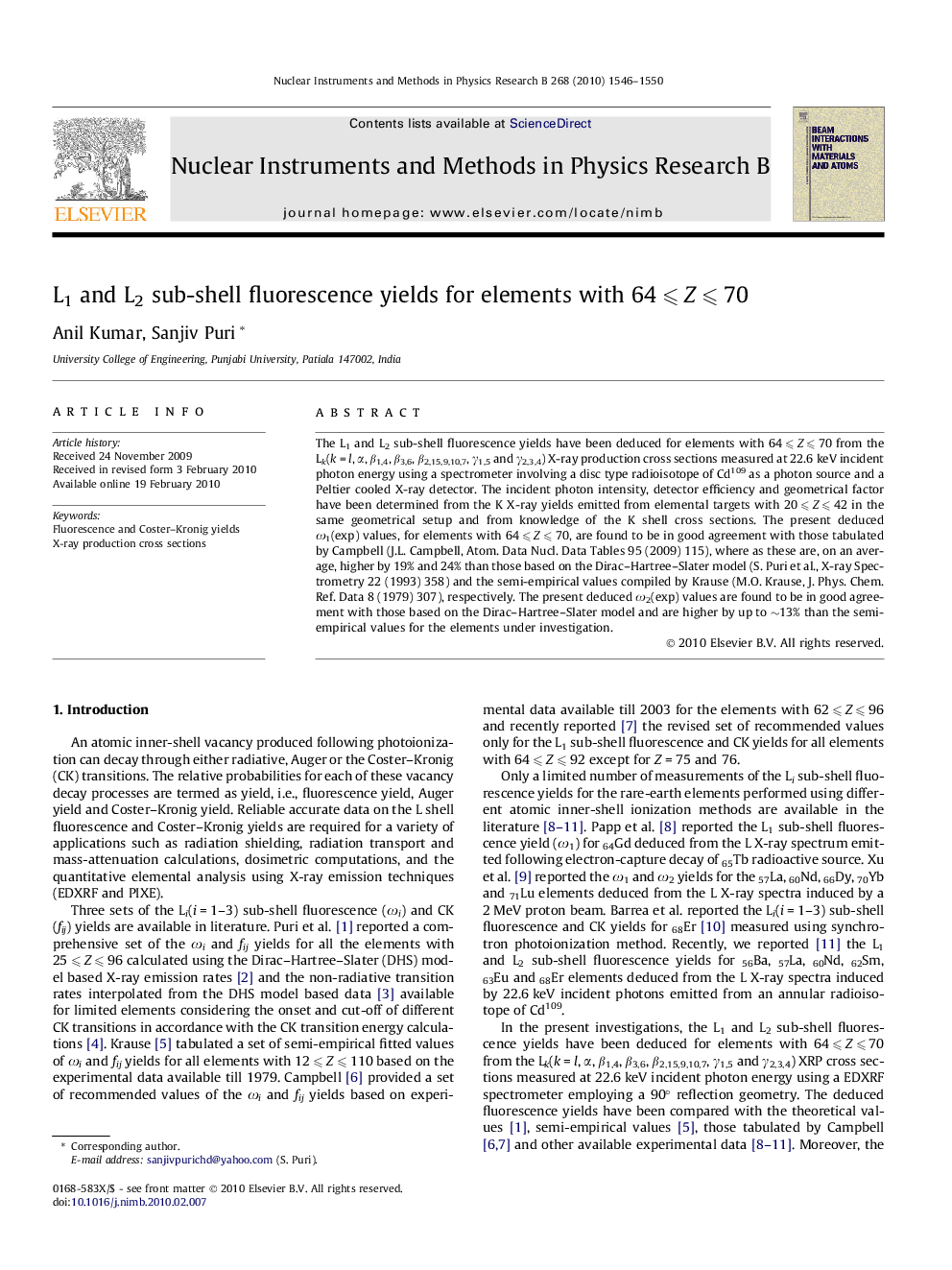| Article ID | Journal | Published Year | Pages | File Type |
|---|---|---|---|---|
| 1684432 | Nuclear Instruments and Methods in Physics Research Section B: Beam Interactions with Materials and Atoms | 2010 | 5 Pages |
Abstract
The L1 and L2 sub-shell fluorescence yields have been deduced for elements with 64 ⩽ Z ⩽ 70 from the Lk(k = l, α, β1,4, β3,6, β2,15,9,10,7, γ1,5 and γ2,3,4) X-ray production cross sections measured at 22.6 keV incident photon energy using a spectrometer involving a disc type radioisotope of Cd109 as a photon source and a Peltier cooled X-ray detector. The incident photon intensity, detector efficiency and geometrical factor have been determined from the K X-ray yields emitted from elemental targets with 20 ⩽ Z ⩽ 42 in the same geometrical setup and from knowledge of the K shell cross sections. The present deduced Ï1(exp) values, for elements with 64 ⩽ Z ⩽ 70, are found to be in good agreement with those tabulated by Campbell (J.L. Campbell, Atom. Data Nucl. Data Tables 95 (2009) 115), where as these are, on an average, higher by 19% and 24% than those based on the Dirac-Hartree-Slater model (S. Puri et al., X-ray Spectrometry 22 (1993) 358) and the semi-empirical values compiled by Krause (M.O. Krause, J. Phys. Chem. Ref. Data 8 (1979) 307), respectively. The present deduced Ï2(exp) values are found to be in good agreement with those based on the Dirac-Hartree-Slater model and are higher by up to â¼13% than the semi-empirical values for the elements under investigation.
Keywords
Related Topics
Physical Sciences and Engineering
Materials Science
Surfaces, Coatings and Films
Authors
Anil Kumar, Sanjiv Puri,
